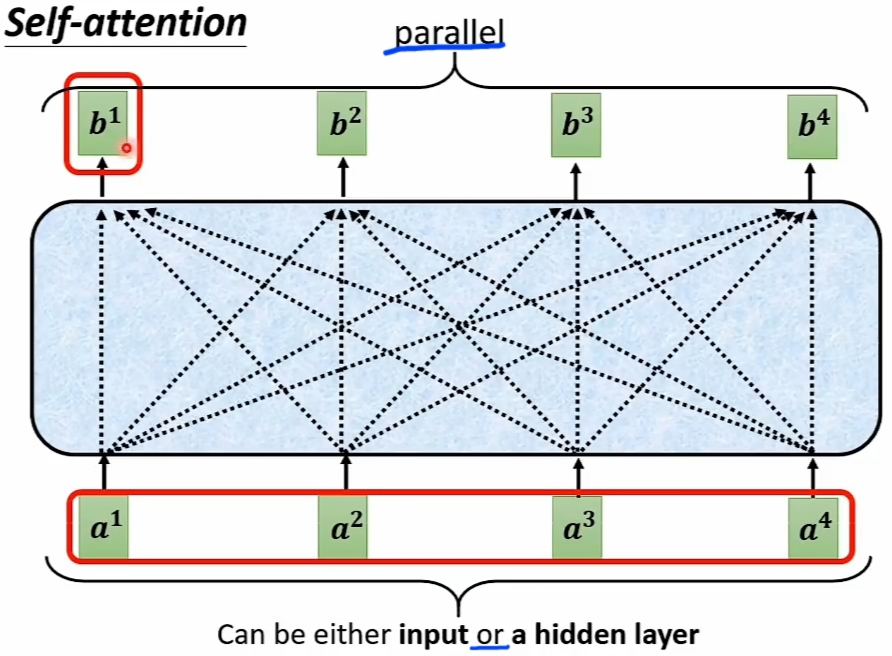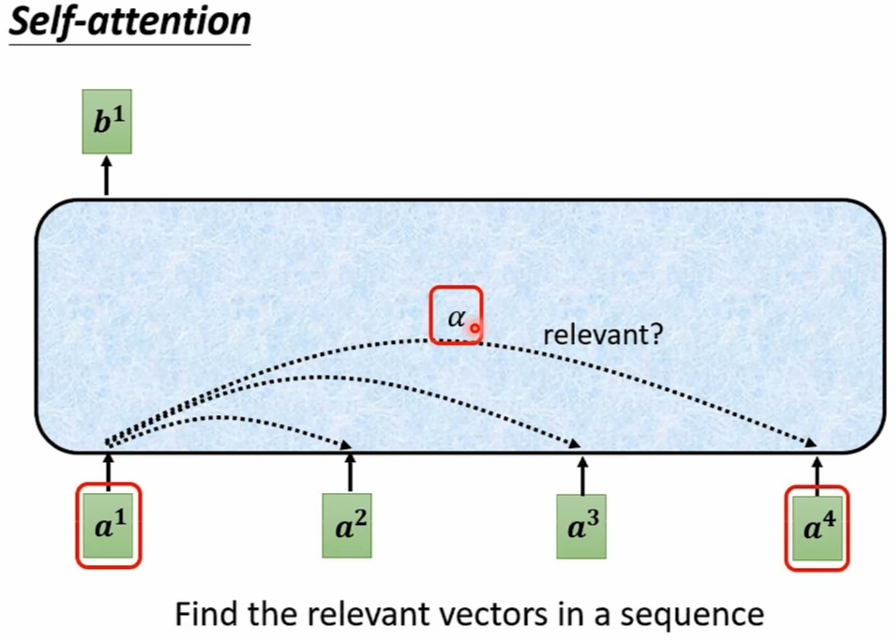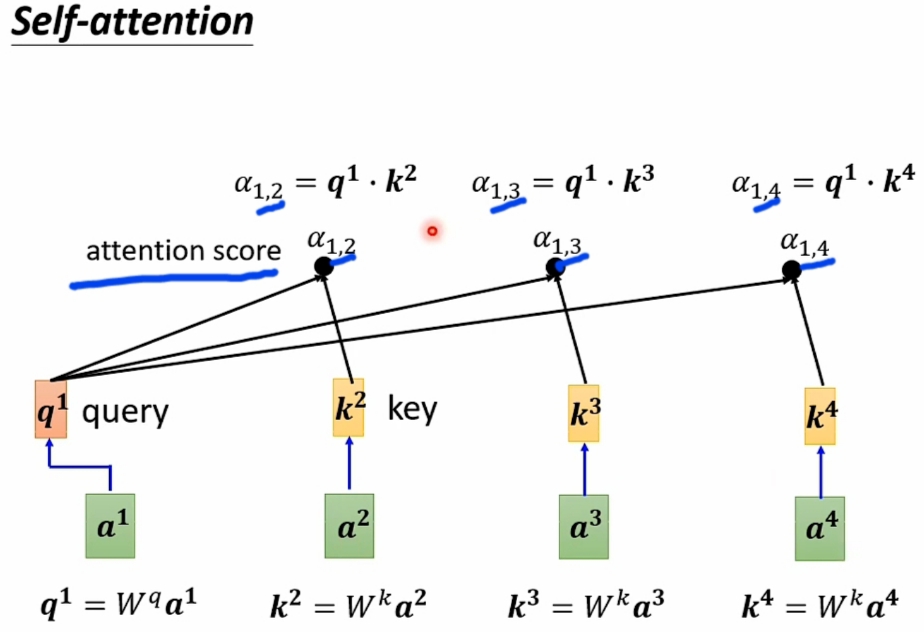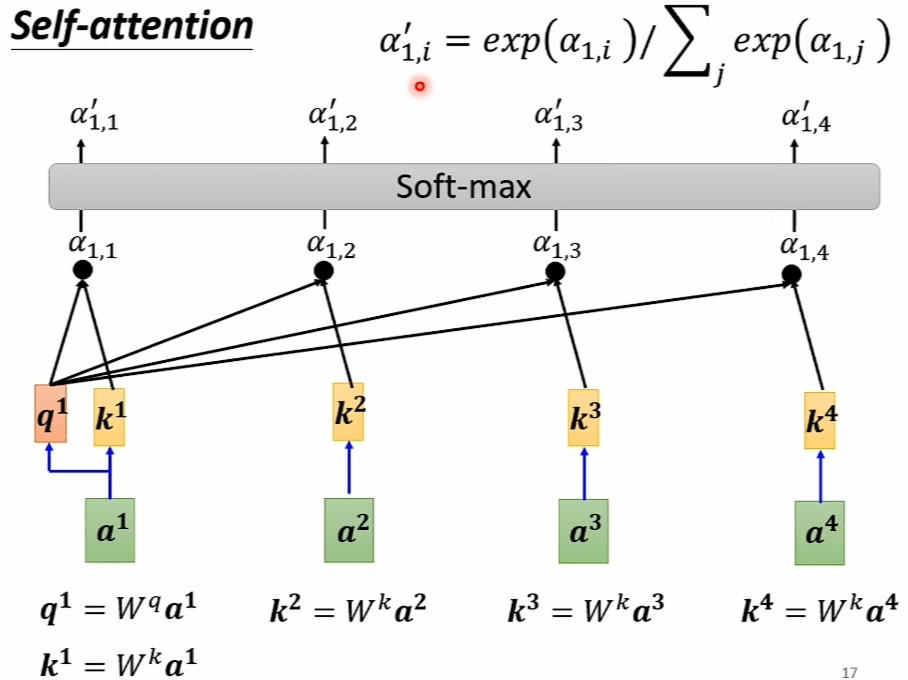SciTech-BigDataAIML-LLM-Transformer Series-$\large Supervised\ Statistical\ Model$监督学习的统计模型+$\large Transformer+Self Attention$的核心原理及实现
SciTech-BigDataAIML-LLM-Transformer Series>

\(\large Supervised\ Statistical\ Model\):
\(\large Transformer+Self Attention\)
-
\(\large Supervised\ Model\): Supervised by \(\large Training\ Data\).
-
\(\large Statistical\ Model\): mainly using Probability+Statistics methods.
-
both \(\large Transformer\) and \(\large Self Attention\) are $ Supervised\ Statistical\ Model $
-
分“训练(学习)阶段”和“预测(应用)阶段”:
-
训练阶段: 在 "大量训练数据" 上 "学习总结事实规律"(确定模型参数),
主流用统计概率分析方法.
例如: \(\large Self Attention\) 训练时确定最好的模型参数\(\large W^q,\ W^k, W^v\). -
预测阶段: 可重复使用的应用"预先总结的(训练数据的)事实规律"进行快捷高效的预测.
例如: \(\large Self Attention\) 预测时,直接用训练好的 \(\large W^q,\ W^k, W^v\) 高效预测 .
-
-
\(\large Transformer\) 及 \(\large Self Attention\) 都是 \(\large Supervised\ Statistical\ Model\)
是对"大量预训练数据", 用"统计概率分析等方法", 学习总结"事实规律"(确定模型参数),
以能可重复使用的应用"预先总结的事实规律"进行快捷高效的预测的模型. -
\(\large Self Attention\)预测时的"乱序计算出稳定" \(\large Attention\ Score\ Vector\) "能力
- \(\large Self Attention\)预测用 \(\large Parameter\) 是"稳定不变"预先训练好存在模型的.
即: 计算Word Sequence任意两个"Word"的\(\large Attention\ Score\)时, 用的 \(\large W^q,\ W^k, W^v\) 是稳定不变的训练好的模型参数. - 任意乱序计算稳定的" \(\large Attention\ Score\ Vector\) " 能力:
"Word Sequence"任意重排, 得到同一 \(\large Attention\ Score\ Vector\)(如果不嵌入 \(\large PE位置信息\)).
- \(\large Self Attention\)预测用 \(\large Parameter\) 是"稳定不变"预先训练好存在模型的.
-
\(\large Transformer\)的核心原理:
是组合使用多种"数学驱动"的先进技术:- \(\large Self Attention\),
- \(\large PE(Positional\ Encoding)\),
- \(\large WE(Word\ Embedding)\).
实现以下多种优点:
- 解耦"Long Sequence"(长序列)的"强顺序依赖(Word的前后位置)",
- 可并行计算 \(\large Attention\ Score\ Vector\),
- 可伸缩性\(\large Scalability\).
\(\large Mathmatical\ Definition\)
\(\ of\ the\ Self Attention\)
Given \(\text{ a sequence of input tokens }\):
, its \(Self-Attention\) outputs $\text {a sequence of the same length} \(:
\) Y_1,\ Y_2, \cdots ,\ Y_n$, where:
\ Y_i \in R^d,\ 1 \leq d \leq n, d is the dimension number of each input token $$
, where
(11.6.1)
according to the definition of attention pooling in (11.1.1). Using multi-head attention, the following code snippet computes the self-attention of a tensor with shape (batch size, number of time steps or sequence length in tokens,
). The output tensor has the same shape.
\(\large Self-Attention\) 的优点 与缺点
-
\(\large Self-Attention\) 的缺点:
- 小模型时, 开销较大。
- Word之间没有"顺序关系":
打乱一句Word Seq.后, \(\large Self-Attention\)仍是计算每两个Word的\(\large Attention\ Score\)。
Transformer 是用上PE(Positional Encoding), 使得每一Word(Embedding)"都嵌入有位置顺序信息"(在 \(\large Self-Attention\) 并行计算 \(\large Attention\ Score\) 时)。
而且能并行计算 \(\large Attention\ Score\), 不必串行(一定计算完前一Word才能计算当前Word).
-
\(\large Self-Attention\) 的优点:
- 解决了"长序列依赖", 支持 "变长"的特长序列。
- 可\(\large Parallel\) (并行)计算 \(\large Attention\ Score\), 易 \(\large Scaleability\)。
大模型时,特别的合适。
![]()
- \(\large Self-Attention\)的\(\large W^q,\ W^k, W^v\) 都是统计分析"预训练数据"总结的规律.
也就是, 用"不同统计分布"的"预训练数据", 就可"训练出"对应行为的统计监督模型。
统计模型一旦设计好, 就可以"只更新 预训练数据", 而不必修改 模型. - \(\large Input\)可以是\(\large 模型Input\), 也可是\(\large Hidden\ Layers\)(隐藏层,非Input或Output).
- \(\large Seq2Seq\)模式: \(\large Output\)是 "模型决定可变长度的" 的 \(\large Output\ Sequence\).
1. Vectorize(向量化) and Matrixize(矩阵化) 不同的\(\large Input\) 数据
常用的数据类型有Text/Picture/Audio/Video/Graph:如社交网与分子图
Attention(注意力) 与 Self-Attention(自注意力)
1. 传统"\(\large Stepping\ Slip\ Window\)"采样方法
\(\large Input\) 为"变长"Matrix(Vector Sequence)时,
"\(\large Stepping\ Slip\ Window\)"(步进式滑动窗口)采样,
采集 \(\large COM(Co-Occurrence\ Matrix)\) 及\(\large Context\)的方式,
只能增大\(\large Length\ of\ Slip\ Window\) 以适应"变长"\(\large Input\).
不易实现"\(\large Scaleability\)可伸缩性.

Google的 \(\large Transformer\) 及 \(\large Self-Attention\) 易实现 \(\large Scaleability\).
\(\large Self-Attention\)自注意力机制
- \(\large Self-Attention\) 可与 \(\large FC\)(全连接层) 多层交替堆叠使用
![]()
\(\large Self-Attention\)的目标:
计算 变长 \(\large Vector\ Seq.\) 的任何两个 \(\large Vector\) 的 \(\large Attention(Relevant)\ Score\):
\(\large Self-Attention\)自注意力的实现
- 中心任务是 "Find the relevant vectors in a sequence":
![]()
- \(\large Self-Attention\)的\(\large Dot-Product\) 与 \(\large Additive\) 实现,常用前一种。
![]()
- \(\large Self-Attention\) 的 \(\large Dot-Product\) 实现精解
\(\large Hypothesis\) :- \(\large Input\ Vector\ Sequence\) 是\(\large [a^1, a^2, a^3, a^4]\)
- 求解的 \(\large Output\ Vector\ Sequence\) 设为:
\(\large [\alpha_{1,1}, \alpha_{1,2}, \alpha_{1,3}, \alpha_{1,4}, \ \alpha_{2,1},\alpha_{2,2},\alpha_{2,3},\alpha_{2,4}, \ \alpha_{3,1}, \alpha_{3,2},\alpha_{3,3},\alpha_{3,4}, \ \alpha_{4,1}, \alpha_{4,2},\alpha_{4,3},\alpha_{4,4}]\) - 以求解\(\large [\alpha_{1,1}, \alpha_{1,2}, \alpha_{1,3}, \alpha_{1,4}]\)为例:
![]()
![]()
![]()
![]()











 浙公网安备 33010602011771号
浙公网安备 33010602011771号